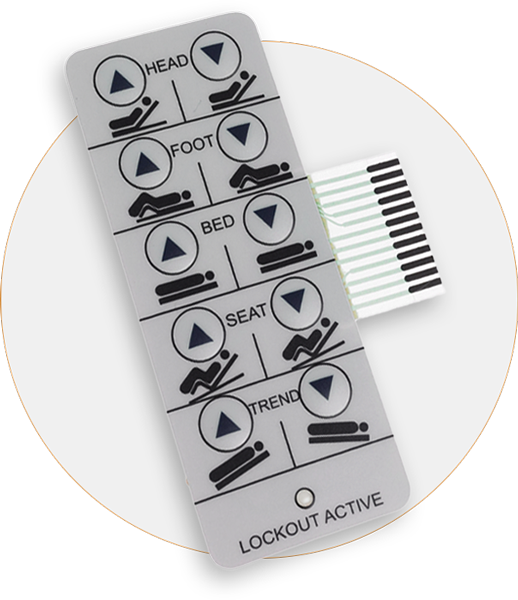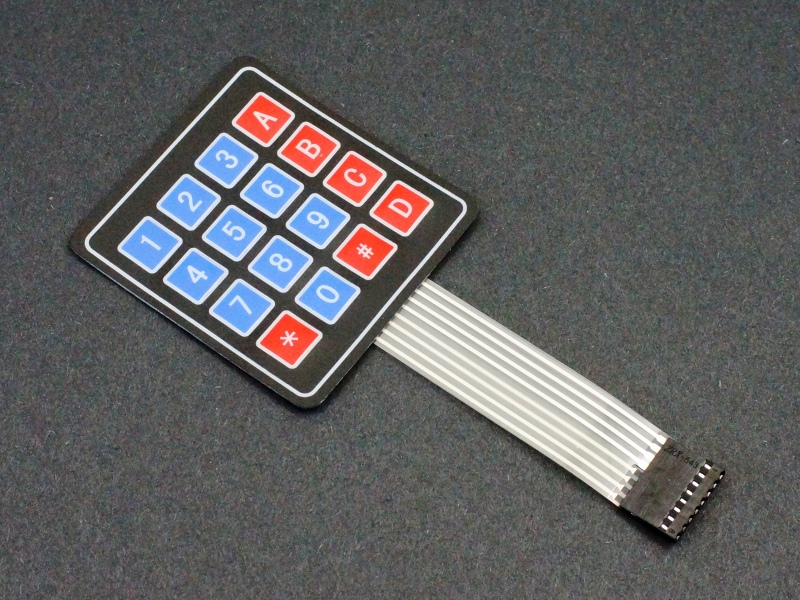Comprehending the Significance of Membrane Switches in User User Interfaces
Membrane buttons are essential parts in the design of efficient interface, facilitating not just performance however additionally improving visual charm and customer interaction. Their one-of-a-kind functions, such as resistance to personalized styles and ecological elements, make them appropriate for a diverse selection of applications across multiple markets. As we discover the future trends and various advantages connected with Membrane technology, it comes to be clear that these switches are greater than just components; they stand for a convergence of development and functionality. The effects of this modern technology on user experience deserve checking out additionally.
What Are Membrane Buttons?

The spacer layer, which contains sticky homes, enables for the separation of the circuit layer from the overlay, making certain that the button stays in a non-activated state until pressed. When pressure is applied to the overlay, it compresses the spacer layer, bridging the gap and completing the circuit in the underlying layer. This design not only lowers the physical area required for conventional mechanical switches however likewise boosts the resilience of the device, as Membrane buttons are typically resistant to dust, dampness, and various other environmental factors.
Typically found in applications varying from consumer electronics to clinical devices, Membrane switches are essential to modern technology, giving a user-friendly and reliable interface that straightens with modern style needs.
Benefits of Membrane Buttons
While various button innovations exist, Membrane Switches deal distinctive benefits that make them particularly desirable in different applications. One of the primary benefits of Membrane buttons is their compact layout, which permits space-saving implementations in tools where realty is restricted. Their thin profile not only improves visual appeal but likewise helps with light-weight building.
An additional significant advantage is their resistance to ecological variables. Membrane switches are normally sealed against moisture, dirt, and impurities, making them suitable for usage in requiring environments, such as medical tools and industrial tools. This resilience prolongs the lifespan of the switch, decreasing maintenance prices and improving integrity.
In addition, Membrane buttons can be personalized to fulfill certain layout demands, incorporating one-of-a-kind graphics and shades that improve individual communication. Their responsive comments choices can additionally be customized to provide a gratifying individual experience. Furthermore, Membrane buttons are economical, specifically in high-volume applications, as they can be created efficiently.
Applications in Various Industries

In the consumer electronics market, Membrane buttons prevail in devices such as microwaves, washing devices, and remotes. Their responsive comments and aesthetic choices enhance user experience while providing a streamlined, contemporary appearance. In addition, automotive producers utilize Membrane buttons in dashboard controls and infomercial systems, where space is restricted, and individual engagement is essential.
Moreover, the commercial market leverages Membrane buttons in control panels for equipment and tools, enabling instinctive procedure in usually rough environments. Their resistance to chemicals and wetness makes certain longevity and reliability in these applications. Overall, the adaptability of Membrane Switches contributes home substantially to their prevalent use, making them crucial in numerous technical domain names.
Design Considerations for Membrane Switches

When developing Membrane buttons, numerous vital considerations should be taken right into account to ensure ideal performance and user experience. First of all, the selection of materials is critical; choosing long lasting, high-quality substratums can enhance the switch's durability and resistance to ecological elements such as moisture and temperature changes.
Second of all, the style of the visuals overlay should prioritize clearness and ease of usage. Icons and text need to be legible, and the format ought to help with user-friendly communication (membrane switches). Furthermore, responsive feedback is important; including a additional resources responsive dome or other systems can boost the customer experience by providing physical verification of activation
One more crucial aspect is the button's electric efficiency. Designers need to make certain that the conductive traces are properly designed to reduce resistance and stay clear of signal disturbance. This entails assessing the required actuation force and ensuring compatibility with the electronic components they will user interface with.

Future Patterns in Membrane Technology
As innovation continues to advancement, Membrane buttons are poised to evolve substantially, driven by innovations in materials and making strategies. One arising fad is the incorporation of innovative materials, such as flexible substratums and conductive inks, which browse around this site boost sturdiness and reduce the general weight of Membrane switches. These materials not only improve the responsive response but also permit the layout of switches that can withstand harsher ecological problems.
Moreover, the assimilation of touch-sensitive innovations is changing conventional Membrane Switches right into even more interactive interface. Capacitive touch sensing units installed within Membrane switch panels can supply a much more responsive and instinctive customer experience, straightening with the expanding need for sleek, contemporary styles in customer electronic devices.
In addition, innovations in printing methods, such as digital and 3D printing, enable quick prototyping and personalization of Membrane switches. This versatility allows makers to respond more quickly to market needs and customer preferences.
Finally, sustainability is coming to be a significant focus, with makers checking out green products and processes. As these trends unravel, the future of Membrane innovation promises boosted performance, visual charm, and ecological obligation, strengthening their duty in sophisticated customer interfaces throughout numerous markets.
Verdict
In verdict, Membrane Switches stand for an essential element in the design of individual interfaces, incorporating capability with visual versatility. Their benefits, consisting of longevity and resistance to environmental aspects, make them ideal for varied applications throughout different markets. Thoughtful design factors to consider boost user interaction and experience. As advancements in technology proceed, the development of Membrane switches is expected to further fine-tune interface, driving technology and improving use in an increasingly complex technological landscape.
Membrane buttons are important parts in the design of reliable individual interfaces, promoting not only functionality but also enhancing visual charm and individual communication.Membrane Switches serve as a vital part in different user interfaces, promoting a seamless communication in between individuals and digital gadgets.While numerous switch modern technologies exist, Membrane Switches offer distinct advantages that make them specifically preferable in different applications.Furthermore, Membrane switches can be tailored to meet certain style needs, including one-of-a-kind graphics and colors that boost customer interaction.In verdict, Membrane Switches represent a vital component in the layout of individual interfaces, incorporating performance with aesthetic flexibility.